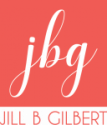It looks like years of going to art museums as a child, plus my time in the Art & Design program—including a crash course in Art Appreciation—has paid off! We aced the test, “Can You Guess the Famous Artist From a Tiny Portion of Their Painting?”
The colors of the Web
Blue hues reign at the top of the most used hues on the most popular Internet sites, according to Paul Herbert Designs. He analyzed the color codes and color code formats that designers use and explains how to convert colors among the different formats.
Size matters
The majority of Web sites use 15-18px body text. The benefits of using LARGER body text include: easier to read from a distance, improved readability, improved usability and increased visual impact. Consider using larger body text, even for “mobile first” designs.
What is minimalist design?
I like minimalist design, but I really did not know exactly what it was until I read this blog post, Minimalist Design: 25 Beautiful Examples and Practical Tips.
Minimalism can be described as the stripping away of all unnecessary elements and focusing on what needs to be there. In this sense, minimalism encourages purpose.”
Worth reading… and I look forward to applying some of the design principles in the future.
(Almost) everything you need to know about color on the Web
W3 Schools (w3schools.com) is a great resource for information on using colors in HTML. You can explore different color standards, find HEX codes, see the latest color trends, and more.
Case Study: Client’s design selection process
Background
Our client runs a small business and wants to draw in more customers. An updated Web site will help them to market the business. Our team’s design goals were to develop a fresh look and to bring the site up to current HTML and CSS standards. This included making the new site responsive, so users can access it from a desktop, tablet, or smartphone.
First, we met with the Client to understand their needs and business requirements. Second, our team developed a site structure with the key pages and elements. Third, we coded the Web designs with sample pages.
Typography first, color second
We presented our Client with three different Web designs with desktop and mobile mockups. The Client was neutral during the presentation and did not seem to favor one design over another. Later, when he provided feedback to the project manager, the Client was interested in typography first, colors second, and hardly mentioned other design elements.
Typography can make or break a Web site
It was interesting that many of the changes to get our client site “ready for prime time” involved typography and Gestalt principles. Typography and Gestalt can make a site a success or a disaster.
Typefaces:
- must fit the organization’s image to convey the intended message and purpose of the Website,
- must be legible and readable,
- should be limited to two or three, and
- should be styled differently to provide emphasis and to separate thoughts.
I took an Invision course, Designing with Type, to learn basic type terms, font pairing mechanics, how to use type on a grid, and more. This will help me to design better Web sites and other graphic communications.
Top 100 Web fonts
Typography trends change, and so do Web fonts. For example, hand-lettered brush fonts are very popular now. In case you were wondering, here is the list of the Top 100 Web fonts for September 2016 and the Top 100 Web fonts for October 2016.
FontAwesome vs. Google Material Icons
Scalable, vector icons are very popular, and you see them on nearly all Websites. Instead of searching for individual icons and storing each image, you use “icon fonts” with hundreds of different icons. FontAwesome and Google Material icons are two such fonts.
